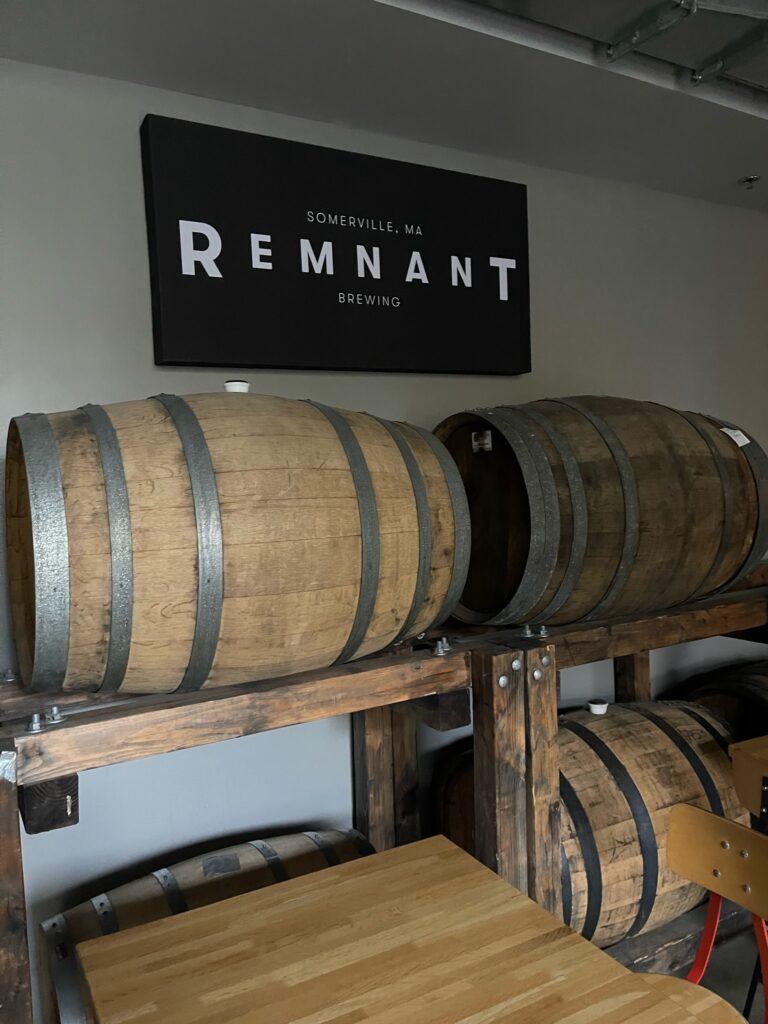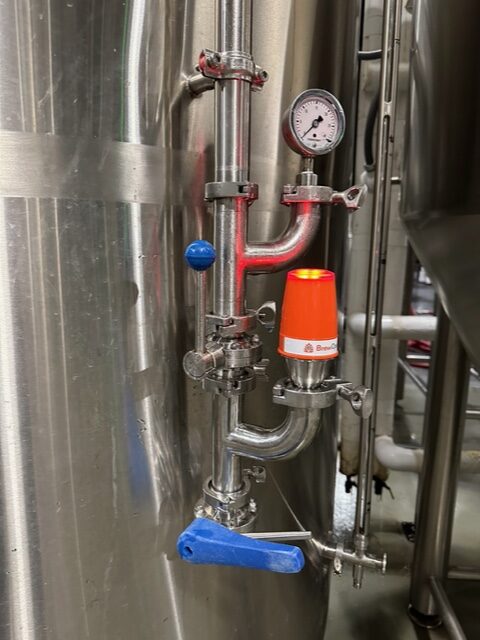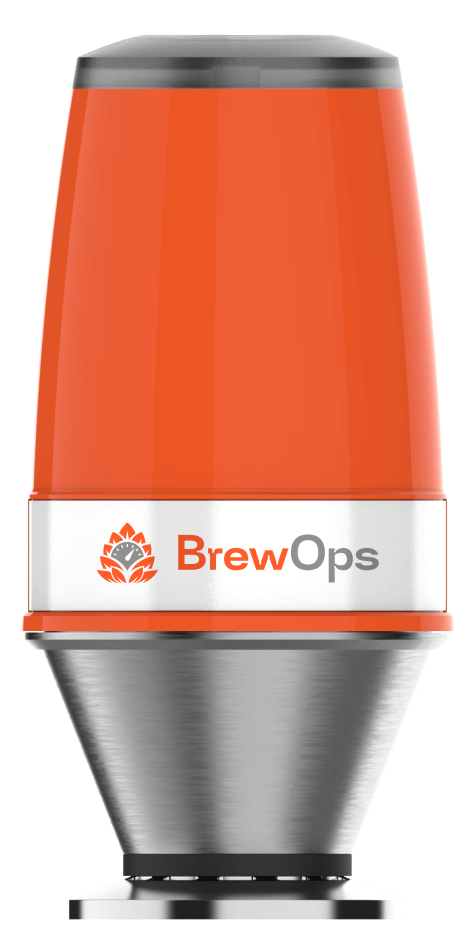When the opportunity to Beta test new sensor technology in a small Pittsburgh brewery surfaced, a local brewer didn’t hesitate. The result was improved consistency and early failure warnings for rooftop chillers and purging automation that saves time, money, and CO2 emissions.
After years of brewing experience, Dave Kushner discovered that science is better than instinct.
“It doesn’t hurt to have both,” he admits. “But for so long in the brewing world all we had were our instincts. And if you can have the advantage of real data that saves time and money and helps you brew better and more consistent beer, then why wouldn’t you at least give technology a try?”
Kushner is the CEO of Trace Brewing of Pittsburgh and its sibling company, Remnant Brewing in Somerville, MA. The 39-year-old brewer and business owner worked as a bartender after college at a craft brewery. He became the assistant brewer and after developing a passion for the industry, he began brewing in his basement. It didn’t take long for the hobby to become a business.
“A lot of my brewing-world coworkers became my friends,” he remembers. “We opened breweries and began brewing together professionally. We were combining our passion of basement home brewing with some professional experience to make it a business.”
In December 2020, he opened Trace Brewing. In the early years, he was having difficulties with two specific aspects of brewery operations—managing the performance of rooftop chillers by monitoring glycol temperatures and dialing in the brew tank purge process to reduce wasted CO2 and increase consistency.
After being introduced to BrewOps CEO and co-founder Aaron Ganick through a mutual brewing connection, Kushner learned that BrewOps automation products were being tested at the Lord Hobo Brewing Company in Woburn, a place near and dear to him as he helped build out the original operations of the brewery. Ganick recalls the first conversation with Kushner in which, “Dave immediately got it, and was excited by what we were working on and where we were heading with the technology. When asked if he wanted to help test it and provide feedback, he immediately jumped on board. Ever since, he has been an amazing supporter and sounding board for new ideas”.
Advantages of Brewery Automation
Kushner remembers seeing the early benefits of testing the automation at his facility.
“Those rooftop units can go down in a storm or go down for maintenance reasons, and you can lose entire batches of beer or all of your beer if it’s not caught quickly,” Kushner explains. “At one point, we had lost a full batch of beer. Because of that, we were eager to try Brew Ops.”
The results were immediate.
“It just gives us peace of mind knowing we are going to get a quick heads up if something goes wrong.”
The second concern for Kushner was the CO2 purging process.
“For brewers, managing the purging process requires a lot of black magic and pseudo-science,” he says, half-jokingly. “The way we typically know if the tank is ready to go with no oxygen in it is just by sniffing it and just kind of feeling the burn. It was just a guess, really.” Now, with the BrewOps Purge technology, Kushner and other brewers no longer have to rely on human senses. They can match science to the process and use real-time data to save time, money, and CO2 emissions with sophisticated sensors that tell them exactly when the tank has been properly purged.
“We no longer have to have a sixth sense or decades of experience to monitor that process,” Kushner says. “Now, science and technology are on our side. So much of what we do is quality control and consistency. What BrewOps allows us to do is use real data to quantify a brewery process.”
Customers expect each beer to taste a certain way every time—especially with craft beer because there’s so many different flavors and different variances.
“With the CO2 Purge device, we cut our times down on the process, save time on labor and are also doing our part for the environment by reducing CO2 emissions,” Kushner says. “We do a lot of training at Trace Brewing and have a vocational program,
so we have a lot of inexperienced workers who don’t have that instinct yet. BrewOps makes it easy. We can tell a new worker, ‘Hey, when this light turns green, the tank is ready for product.’ Simple as that.”
The simplicity of training and ease of use are crucial advantages of brewery automation, especially for small breweries, he says.
“With the glycol temperature monitoring we receive an alert that our glycol unit is out of the ideal spectrum. We have had no failures since we started using BrewOps,” Kushner says. “It allows us to just triple check and make sure that after a storm or after a surge, we don’t have to go up on the roof and check it out. It’s a safety issue as well as an efficiency issue.”


What Makes Brewery Automation Attractive for Small Brewers?
“A lot of things attracted us to BrewOps,” Kushner remembers. “It has a small footprint. It’s easy to install. You don’t have to rework your entire system or your entire space. It’s affordable. There is virtually no training required. And then, of course, the technology itself is really modern and state-of-the-art. We track critical processes easily and get alerts when things go wrong.”
As a bonus, the sensor automation saves time and money.
“Brewers are always calculating how much money it’s going to take and how much time it’s going to take to implement a new technology and for training,” Kushner says. “And how much space it’s going to take is also really important, especially for a small brewer. None of those things are issues with any of the BrewOps products.”
In addition, Kushner says he appreciates the personal touch and customer service his two breweries have received from BrewOps.
“Going all the way back to the beta testing, BrewOps was really driven about wanting to help brewing businesses make the best consistent quality product that they can make,” he says. “They made an extra effort to understand our problems and to help us find specific solutions. A lot of the questions we get from BrewOps are ‘How can we make this better? How can we make it more efficient? How can we make it easier for you.’ I think they’re still doing that even though they’re now way past the Beta phase.
“In a lot of ways I think they are very similar to the craft brewers who want to make the best product possible. They want to make it as easy as possible, and as affordable as
possible. We’ve been really happy with the company. We now have peace of mind, and when you have tens of thousands of dollars of product on the line, that peace of mind is definitely worth every penny.”
Adopting New Brewery Technology
Ganick says Kushner was the perfect adopter of new technology and had the courage to allow testing in his facility.
“Dave is totally visionary,” Ganick says. “He helped us test and validate the BrewOps Purge in the very beginning. When I explained to him our mission of using sensors and automation to improve operations for breweries of all sizes, he was instantly hooked. He told me it’s just what the industry needs, was super excited about where we were headed. He immediately signed up to be a Beta tester, and the rest was history.” At the two breweries, testing was successful with the BrewOps Purge and BrewOps Chill solutions.
“They started by purging several brite tanks per their usual SOP (standard operating procedure) using our prototype sensor essentially as a data logger,” Ganick says. “We could remotely watch the live and historical data in real time and gained critical insights into how their operators were purging. Then we reviewed the data with them, shared the results and then used that information to fine-tune the algorithms that purge. We then repeated the testing with them until we dialed in our software, ultimately creating an easy-to-use tool that brewers could depend on”
Providing solutions for industry specific problems requires intense collaboration.
“Beta testing with real users is critical to our innovation process,” Ganick says. “It not only takes people who are interested in learning from new sources of data but are willing to try new things and provide critical feedback, both good and bad. There needs to be the right combination of their investment of time and ability to translate their specific operator acceptance feedback into general requirements that improve the industry as a whole. Operator acceptance is critical for us. Solving problems that people care about in ways that become a part of their daily routine is our ultimate measure of success. Doing this well, and repeatedly with our solutions is our team’s daily motivation.”
How Brewery Automation Provides a Quick ROI
When calculating the return on investment, Kushner learned quickly that the expense of a few sensors to protect critical brewery equipment was worth it.
“It’s absolutely worth it,” Kushner says. “There has been a clear disruption in the industry. There was a time when monitoring technology was really expensive, but the industry and companies like BrewOps are making automation affordable for small breweries and small businesses.”
Want to learn more about how BrewOps sensor technology can help you brew better beer? Follow this link to get pricing.



